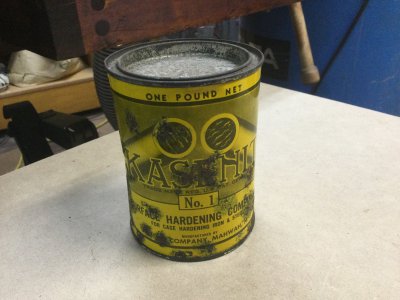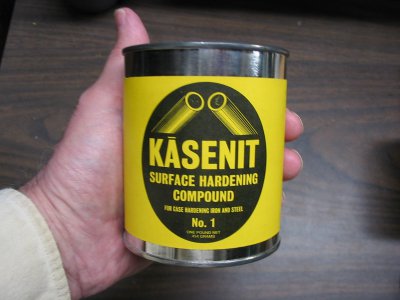- Joined
- Feb 1, 2015
- Messages
- 9,605
Some of the sources that I saw claimed achieving a deeper case with charcoal than with than with Kasenit or Cherry Red. The process did take several hours. However, leather contains nitrogen compounds which form nitrides, also very hard. Sodium cyanide used to be the old tried and true case hardening compound and contains both carbon and nitrogen. It was largely discontinued in favor of ferrocyanide and ferricyanide compounds because of its high toxicity.My understanding is that wood charcoal or other fairly pure forms of carbon tend to be very slow to absorb into the steel, making them not as good for surface hardening. Charcoal made from leather, due to the tanning additives, works much faster. You can also mix some of the comercialy availbale hardening comounds in with charcoal or other forms of carbon, as these contain the additives which accelerate the absorption of the carbon.
Case hardening has been around for more than a thousand years and the case hardening formulae were closely guarded secrets. Usually, some nitrogen bearing material like urine or manure were part of the recipe .



